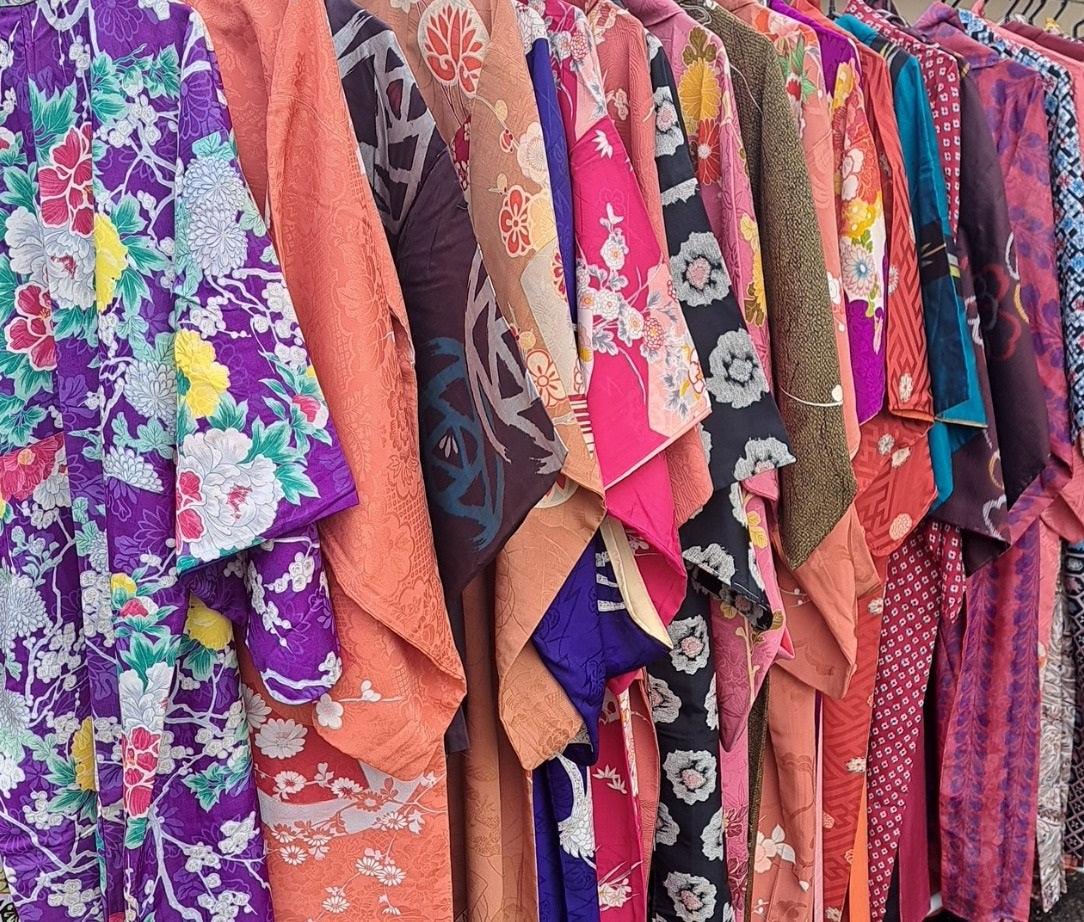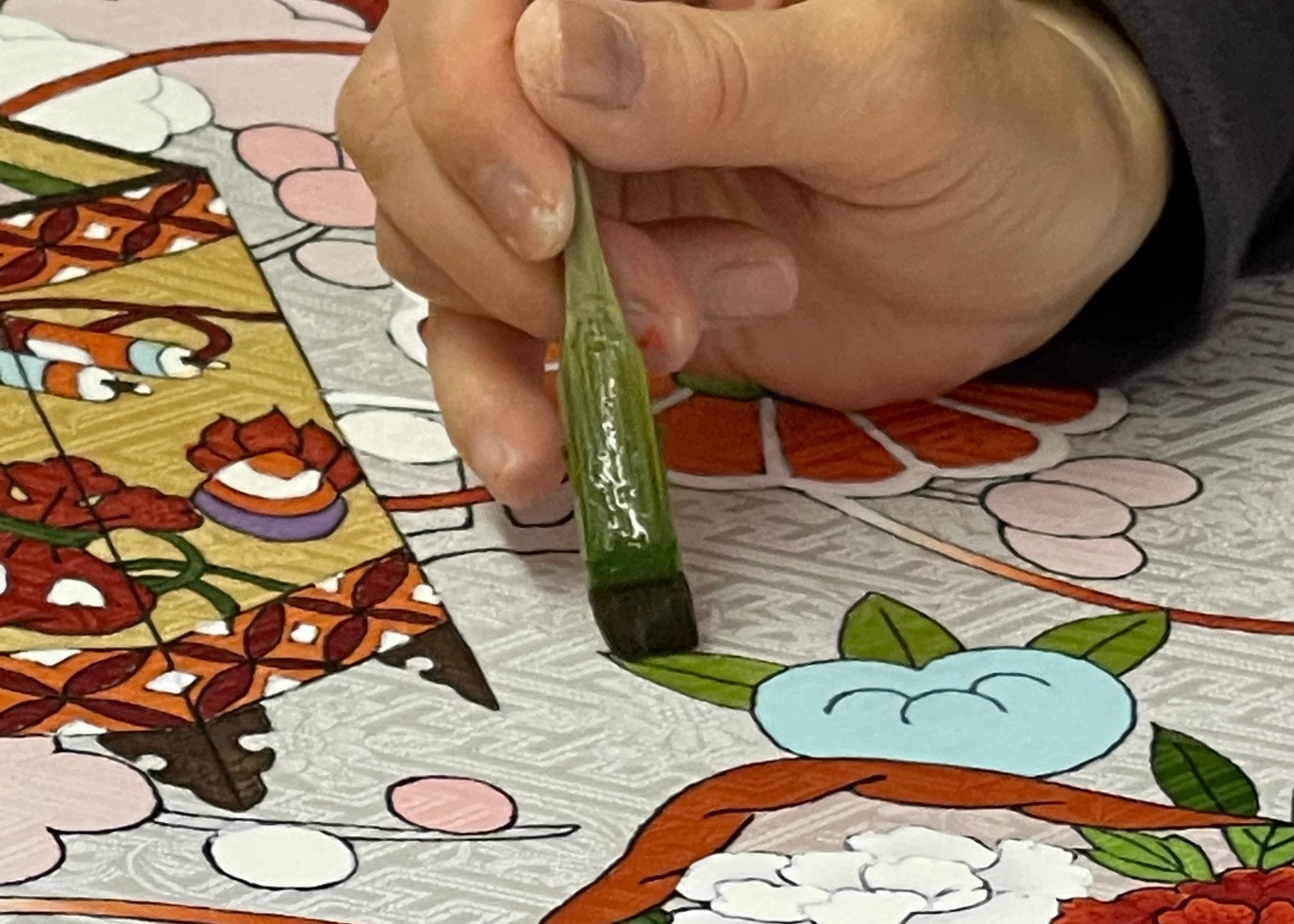Japanese Garments: Kimono as part of Rich Japanese Cultural Heritage
While “kimono” translates as “thing to wear”, it represents a deep-rooted history and continues to hold immense cultural importance in modern Japan. The subject merits volumes, but in this article, we offer only an overview into the captivating world of traditional Japanese clothing and touch on the cultural elements behind these iconic garments.
JAPANESE KIMONO
Let's start with the kimono, the Japanese garment that is most familiar. The kimono is a T-shaped, ankle-length robe worn by both men and women. It can be formal, with family crests and adorned with embroidery and dye work that reflects the great attention to detail and craftsmanship for which Japan is well known. Kimono (the plural is written without an “s”) have been a symbol of Japanese culture for centuries and were once main garment worn by all Japanese. These days, they are more commonly worn for special occasions, such as weddings, recitals, ceremonies, and the like.
The formality level of a kimono is suggested by its design and colors. The most formal kimono feature fine artistry, sometimes even carrying the name of the designer discretely hidden from view when worn. Formal kimono are usually silk and have an asymmetric design, balanced using depth, density and placement of the motif rather than duplicated elements. Casual kimono are more often designed with a small repeated motif, even stripes and plaids, and can be made with any fiber. In all cases, several features of the kimono - sleeve length, patterning, embellishment, and crest placement – reveal a bit of the personality, age, and marital status of the wearer as well as the occasion.
JAPANESE OBI
Kimono are traditionally worn with an obi - a 14” wide. 11’ long belt that is wrapped around the waist and tied in a large bow in the back. While the obi is not meant to keep the kimono closed (other under-layers do that), choosing an elegant obi can elevate a semi-formal kimono to a higher level of formality; a less formal obi can lighten the formality so that a semi-formal kimono could be worn to a casual event.
As you might expect, there are many different styles of obi, from casual to formal. Formal obi (called maru or fukuro) are a standard width – about 14 inches – and are typically heavily woven or elaborately designed over the entire length. Nagoya obi might be formal or casual, but their shape is unusual: wide for about one third of the length and half that width for the other two thirds, which makes the obi easier to put on and more comfortable to wear. In addition, nagoya obi can be lower cost, since there is less fabric needed.
Obi can be tied in a great variety of bows at the back of the kimono, but each has its place on the “formality continuum”. The choice of bow would made based on the wearer, the kimono, and the occasion, and professional kimono dresses in Japan train for years to perfect their eye and their craft.
KIMONO JACKETS
Just as there are different styles of kimono, there are many different types of jackets meant to be worn on top of the kimono. Most can be more or less formal – the difference among them is the shape.
HAORI:
Haori are T-shaped jackets meant to fit over the kimono, with the sleeves nested and the jacket length complimentary to the kimono length. Haori do not cross in the front but are joined by an (optional) himo tie that still allows a gap so that the kimono beneath can be appreciated. An interesting feature of haori can be the lining, which sometimes contrasts with the outer jacket fabric. Vintage Japanese haori are usually reversible, since all of the hand-stitching is hidden – so if the lining fabric is as appealing as the outer jacket fabric, haori can be worn inside out.
DOCHUGI:
Dochugi are a type of kimono jacket more often worn by shop keepers or artisans working in their studios. The sleeves are often tapered so as not to get in the way of work, and some feature a handy pocket or two. Dochugi do cross over, like a kimono, using one set of ties on the inside to keep the hemline straight and a second set that connects the left side to the right hip. Dochugi are popular with those who prefer a roomier jacket, since the ties allow for a tight or loose fit.
MICHIYUKI:
Michiyuki are a kimono over-coat with a square neckline and snaps or covered buttons closing the jacket in the front. There is sometimes a hidden pocket in the front panel seam. Michi refers to “the street” and yuki refers to “going out”, so this style can be worn over a kimono when a chilly day is ahead.
Wedding Kimono
Traditional Japanese brides can choose from three different style of wedding kimono for their special day. Uchikake are heavily embroidered, woven, or dyed outer robes that are worn on top of another layer, with a red, rounded padding at the hem. They are not belted, but are worn over a kakeshita kimono. Kakeshita are also intricately designed but are lighter than uchikake and easily belted. Both of these robes are typically adorned with auspicious symbols like cranes (which mate for life) or florals that symbolize longevity and prosperity.
A third style of wedding kimono is the shiromuku, a white-on-white silk kimono worn for a Shinto wedding ceremony and accompanied by one of two styles of white headdress. The hood style – a simple, loose semi-circle of silk – is called wataboshi, and the stiffer version that is worn more like a hat is called tsunokakushi, and is said to cover “the horns of jealousy” or any negative feelings the bride might have as she looks to her future life with her husband’s family.
HAKAMA
While most people don’t associate pants with kimono, there is one style of traditional Japanese pants that are still in use. Hakama are wide-legged and skirt-like pants – sometimes actually having a skirt construction rather than wide leggings –worn over the kimono on special occasions. Originally worn by samurai, men’s hakama are often dark colors and unpatterned, but are now more of a formal garment worn by grooms, martial arts practitioners, stage performers, or men attending formal events. There is a more colorful, often embroidered version worn by women – most commonly by young girls graduating high school. While men wear hakama low on the hips, young girls wear hakama high on the waist.
Traditional Japanese clothing represents more than just fashion - it is a testament to Japan's rich cultural heritage and aesthetic values. Each garment tells a story, reflecting the wearer's identity, social status, and the occasion at hand. The meticulous craftsmanship and attention to detail that go into creating these garments can be stunning and even incredible to the Western observer. But a deeper look into these timeless garments can only draw the reader more deeply in to an appreciation for Japan's culture, artistry and traditions. The next time you see someone dressed in kimono, perhaps you’ll see more than meets the eye.




